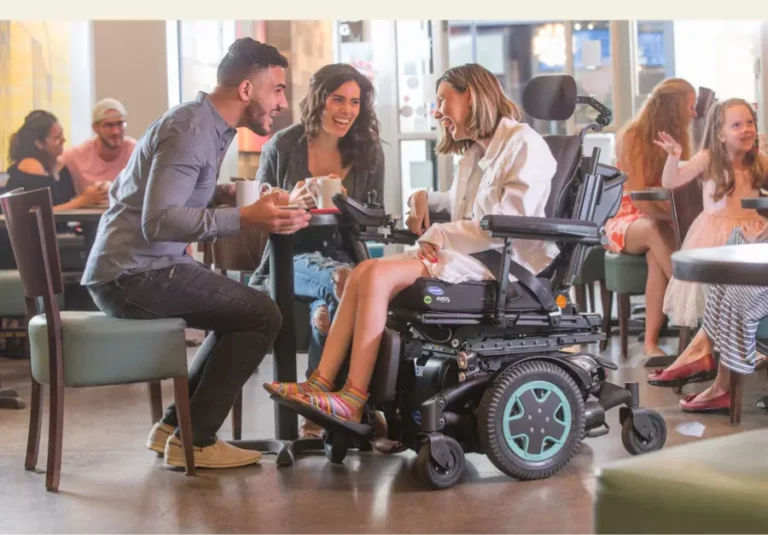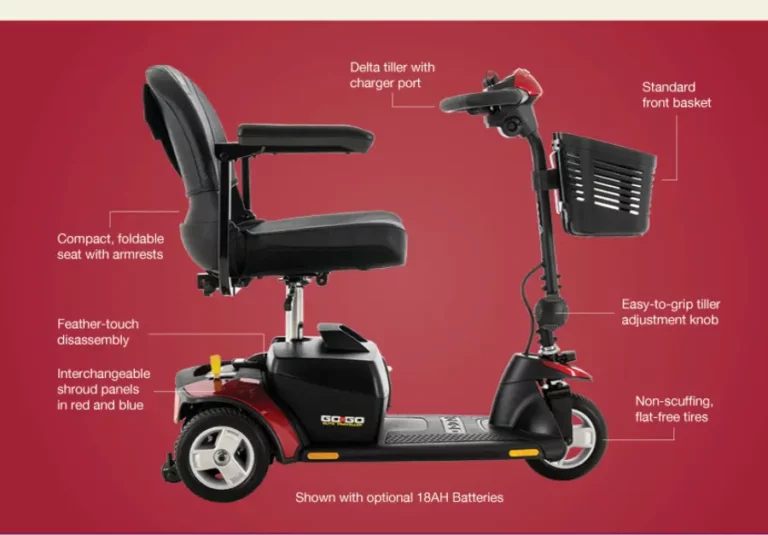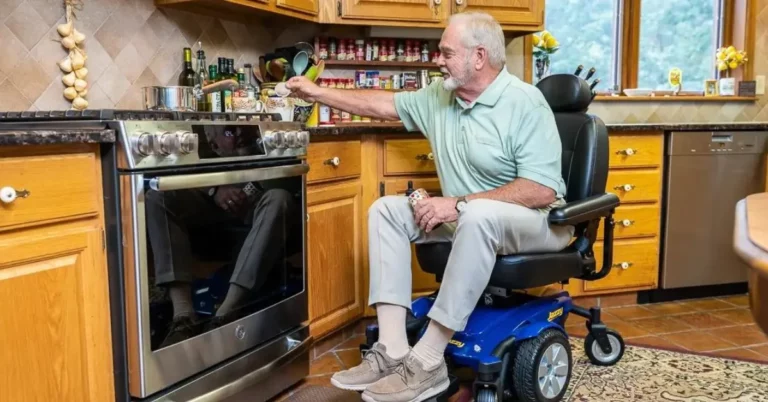What Types Of Power Wheelchairs Are Covered By Health Insurance?
Key Takeaways:
Choosing the right power mobility device is crucial, and this guide breaks down the key features of each type of device covered by insurance. This will help you make an informed decision based on your specific needs.
- Power Scooters: Power scooters are a popular choice, they offer portability and convenience along with features like simple controls and flat-free tires. However, for those with significant mobility limitations, drawbacks include a straining steering controls, lower weight capacity, long narrow base, limited seating support, and fewer customization options when compared to power wheelchairs.
- Standard Power Wheelchairs: Power wheelchairs are motorized chairs with a joystick control. They offer a wider range of features compared to scooters. Power wheelchair features include, a tight turning radius, more miles per charge, joystick control, customizable cushions and additional safety feature options.
- Complex Rehab Wheelchairs: Specifically designed for individuals with significant mobility-limiting medical conditions, these chairs offer high customization, diverse seating options, advanced drive control systems and powerful seating systems such as those with tilt and/or recline capabilities. Complex rehab wheelchairs provide personalized solutions for complex mobility requirements.
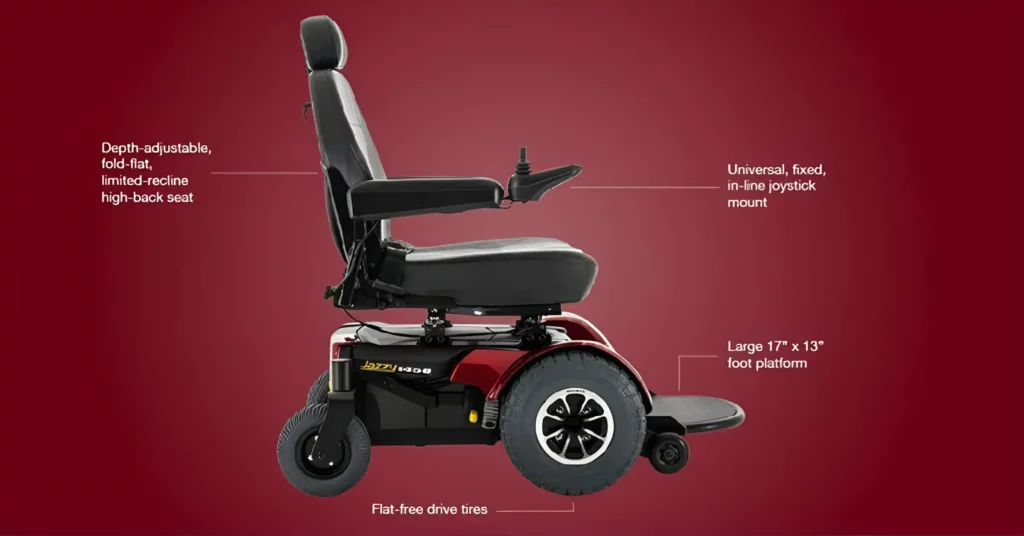
Introduction
If you or a loved one is grappling with mobility challenges, you may benefit from a power mobility device. Understanding what types of power mobility devices insurance covers may seem complicated, but through this blog post, we aim to simplify this for you.
Qualifying for a power mobility device requires meeting specific medical necessity criteria, backed by thorough documentation. In this guide, we break down power mobility devices into three distinct categories, providing you with a comprehensive understanding of available options.
Furthermore, if you seek additional insights into the qualification process for these devices through your health insurance, feel free to reach out to us using this link.
Power Scooters or Power-Operated Vehicles (POV)
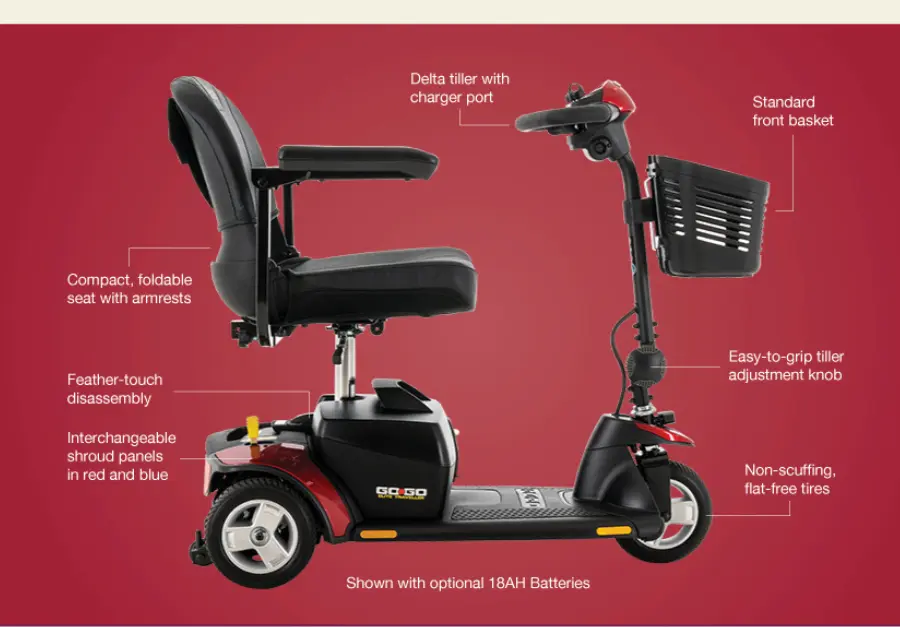
Power scooters are lightweight, electrically powered devices, often covered by insurance, for those facing indoor mobility challenges. An example of a power scooter covered by insurance scooter is the Go-Go Elite Traveler from Pride Mobility.
Power scooters generally feature a comfortable seat, a tiller handlebar steering system, and a flat platform in front of the seat for an individual’s feet. Depending on the model, additional key features may include:
Portability: Many power scooters are designed for easy disassembly and transport, fitting into the back of a individual’s car for use in different locations.
Front Basket: A front basket is a common feature on power scooters, providing storage space for personal items and belongings.
Simple Controls: Controlling the device is made simple, assuming the user has the necessary strength to operate the power scooter’s tiller steering system. Additionally, an intuitive speed control dashboard allows for greater control.
Flat-Free and Non-Scuffing Tires: Power scooters typically use flat-free solid rubber tires, eliminating the hassle of inflation. These tires are also non-marking, making them ideal for indoor use.
Although power scooters are popular, it’s important to understand their unique drawbacks for individuals with mobility limitations. These include:
Straining Control Mechanism: Power scooters typically use a tiller handlebar steering system, which requires an individual to have sufficient strength and dexterity to operate. Individuals with limited upper body strength or coordination may find it difficulty to keep their arms stretched outward to maintain control while steering the device.
Weight Capacity: Power scooters typically have lower weight capacities compared to options available for power wheelchairs. This limitation is important for individuals requiring higher weight capacities in order to ensure a long lasting durable solution.
Lack of Seating Support: The seating support in power scooters is not as advanced as the seating options available in power wheelchairs and complex rehab wheelchairs. For individuals requiring extensive postural support or skin protection, power scooters may not adequately address their needs.
Limited Customization: Power scooters do not offer many customization options when compared to complex rehab wheelchairs for individuals with specific seating and fitting requirements.
Standard Power Wheelchairs
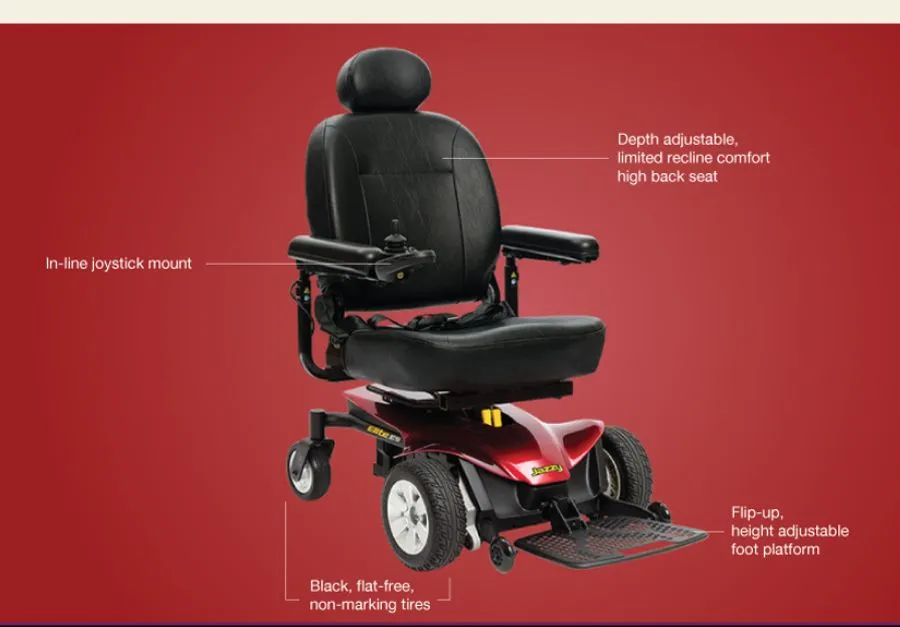
Power wheelchairs are motorized chairs that typically utilize a joystick as the primary control mechanism for maneuvering. When compared to power scooters, the power wheelchair category offers a broader range of options and features.
Common features found in most power wheelchairs include:
Motorized Battery-Powered Movement: A power wheelchair becomes a necessity when a manual wheelchair or power scooter is medically insufficient. These devices last longer per charge than power scooters with a lifespan of approximately 8 to 19 miles per charge. Charging it overnight usually means the battery will last through a full day of indoor use.
Tight Turning Radius: Unlike power scooters, power wheelchairs feature a tight turning radius, facilitating effective home navigation through tight hallways and small spaces.
Joystick Control Interface: An armrest mounted joystick operation is a standard feature in most power wheelchairs. Alternate control interfaces, such as an attendant control, can be fitted based on an individual’s specific medical need.
Customizable Cushions and Backrests: Power wheelchairs offer advanced seat and back cushion options for individuals requiring pressure relief and postural support.
Seat Belts & Anti-Tip Wheels: Seat belts and anti-tip wheels are available on power wheelchairs for enhanced safety.
Flat-Free Non-Marking Tires: Similar to power scooters, power wheelchairs are usually equipped with flat-free non-marking tires, making them ideal for indoor use.
Power wheelchairs vary in size and offer a wide range of weight capacities. Lightweight options, such as the Pride Mobility Go Med Chair, offer an easy disassembly process allowing for a portable solution. Heavy-duty power wheelchairs have weight capacities ranging from 450 to 600 lbs and beyond.
Complex Rehab Wheelchairs
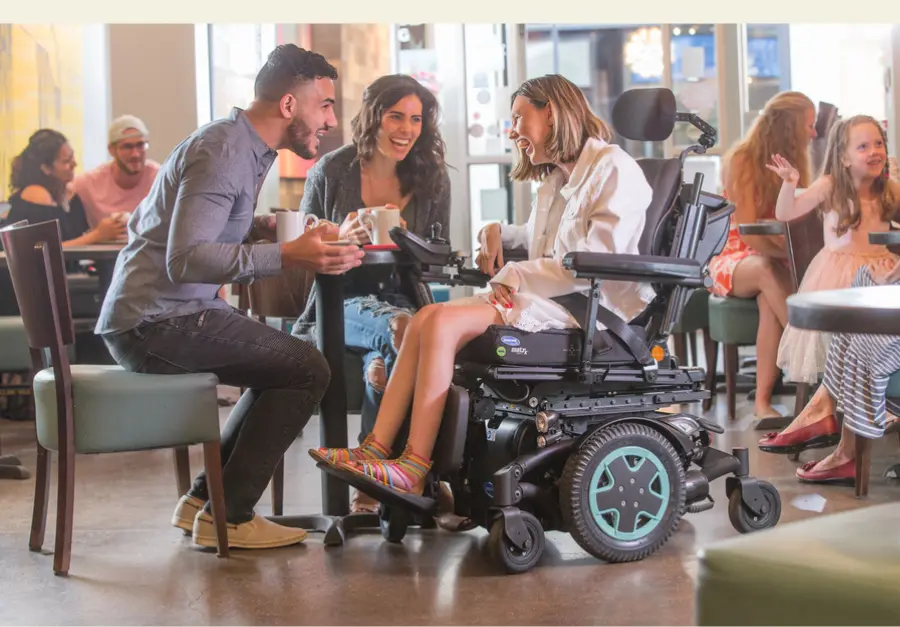
While power scooters and standard power wheelchairs typically cater to individuals with general mobility limitations, some individuals require more intricate, specialized, and tailored solutions. Complex rehab wheelchairs, like the Invacare TDX SP2 (pictured above), are specifically designed and configured to meet the unique needs of individuals with neuromuscular conditions such as Parkinson’s disease, Amyotrophic Lateral Sclerosis (ALS) and muscular dystrophy.
Key features of complex rehab wheelchairs include:
Customization: Unlike standard power wheelchairs, complex rehab wheelchairs offer high levels of customization. Individually configured to address specific clinical and functional needs, these wheelchairs may involve custom seating and positioning, specialized controls, and adjustments to accommodate unique physical requirements. An Assistive Technology Professional (ATP) is often involved, analyzing the patients disabilities and measurements, recommending device selections, and assessing the home environment to ensure the rehab wheelchair is custom-built for optimal use.
Seating and Positioning Options: Complex rehab wheelchairs provide a wide array of seating and positioning options. Individuals can benefit from adjustable seat heights, tilt-in-space features, reclining capabilities, and specialized cushions for pressure relief. These options enhance comfort, offer necessary postural support, and facilitate caregivers in providing effective care. Tilt-and-recline positioning features support activities such as intermittent catheter changes and patient transfers easier.
Advanced Control Systems: To cater to individuals facing limited upper extremity mobility or dexterity, these wheelchairs can be equipped with specialized drive control interfaces, including an attendant control, sip-and-puff control, head array, or chin control to enable effective operation.
Powerful and Precise Motors: Equipped with powerful and precise motors and suspension systems, complex rehab wheelchairs ensure smooth and controlled movement over everyday obstacles. Advanced motor systems contribute to better maneuverability and stability.
Specialty Drive Systems: Depending on the individuals needs, complex rehab wheelchairs may feature specialty drive systems, such as mid-wheel or rear-wheel drive. These systems offer different advantages in terms of turning radius, stability, and overall performance.
Conclusion
In conclusion, while power scooters and standard power wheelchairs address a broad range of mobility challenges, complex rehab wheelchairs serve as advanced, personalized solutions for individuals with complex mobility requirements. These specialized devices play a crucial role in enhancing independence, mobility, and the quality of life for those with significant physical limitations.

